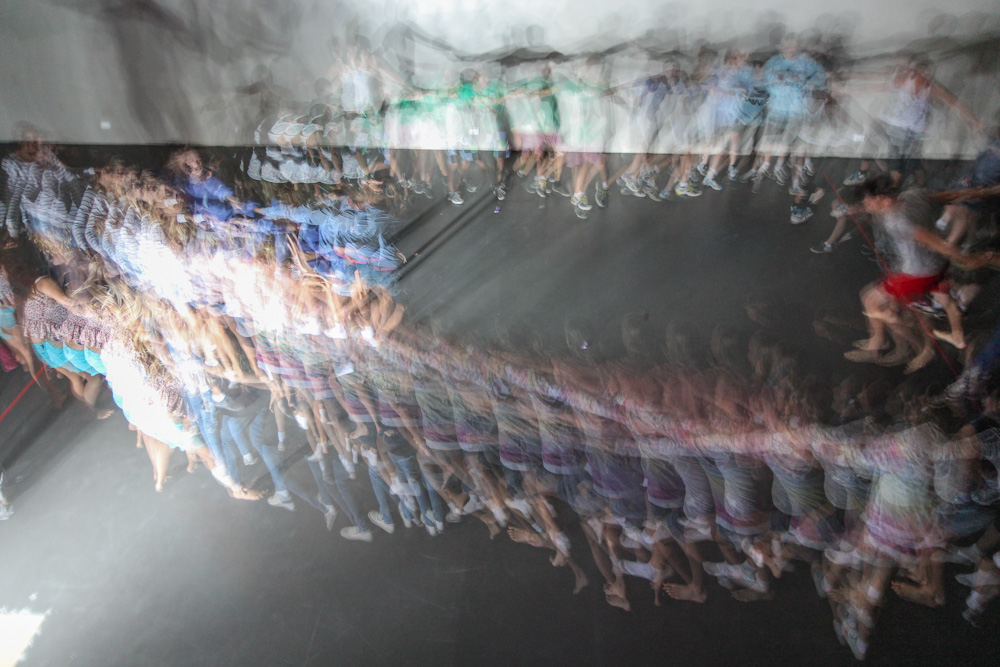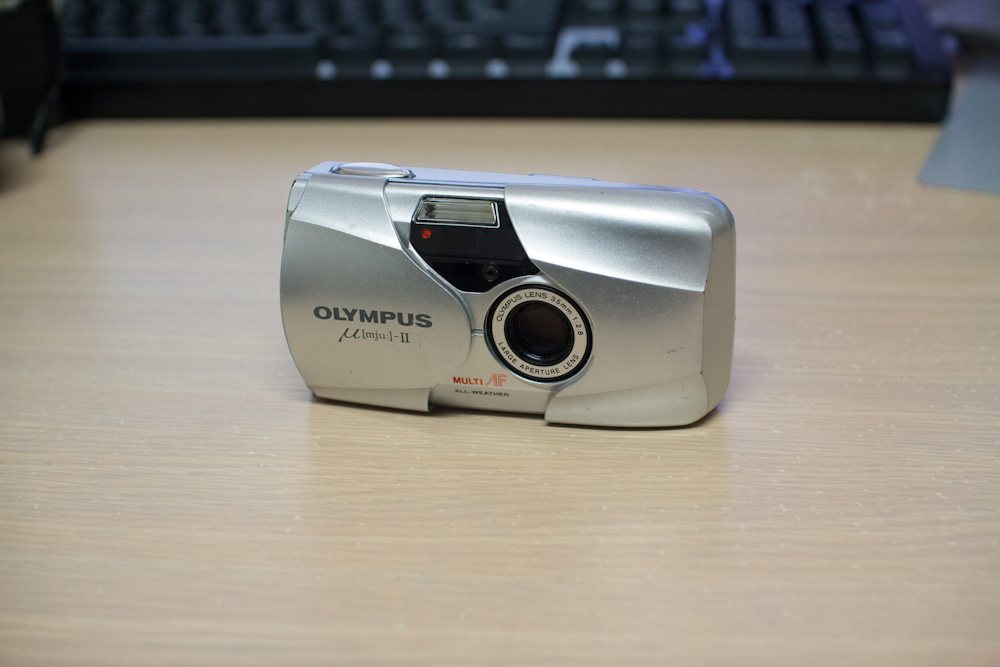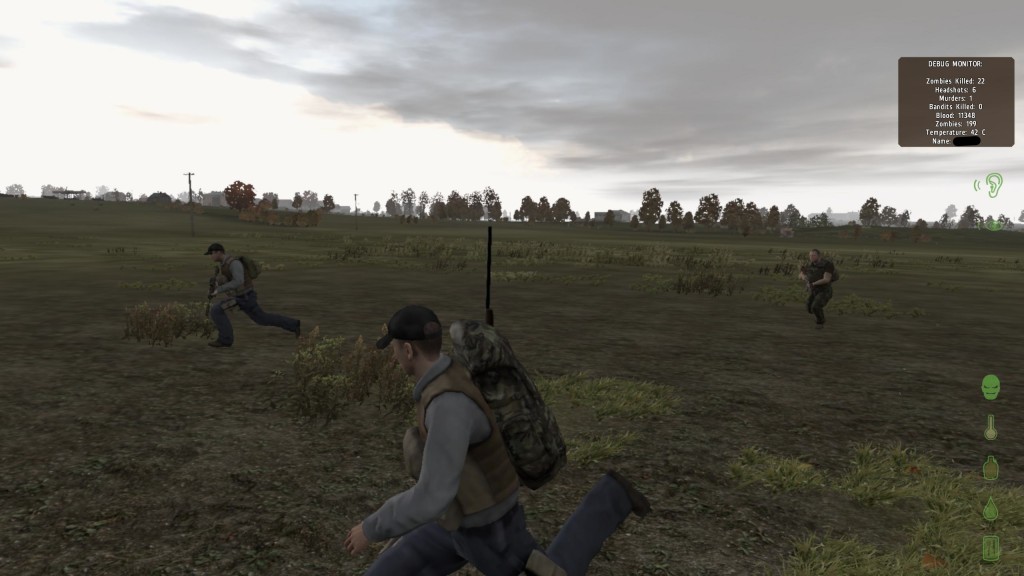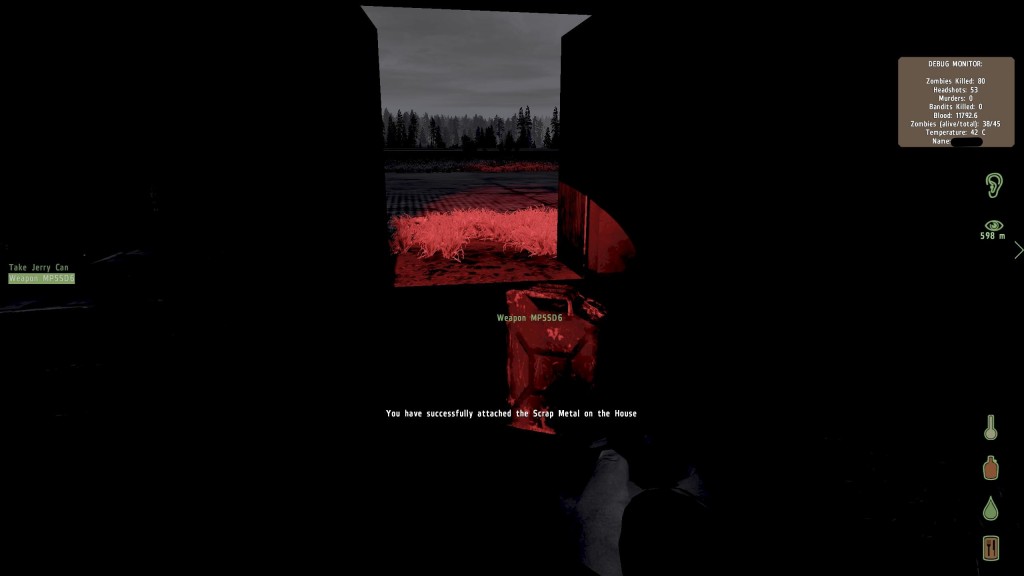Archive | 2012
Prints
It intrigues me that in a a world where the entire process is digital, there’s still intrinsic value to be had from a distinctly analog concept; the concept of prints.
Film is so unique in that traditionally, people have just made prints directly from their negatives or slides. But then the digital revolution happened, and people started digitising their negatives so they could view them on their new-fangled computers. Prints kinda, sorta, fell out of fashion as costs for developing and printing soared with the digital revolution. For many people, digital was all about convenience — being able to instantly view photos and share them to others was a huge plus. Having to wait an entire hour before photos could be viewed was a thing of the past. Our time grew more valuable, and film was all but forgotten.
Not so in the film industry, apparently, where film still holds a special something over digital:
No wonder, then, that directors like Christopher Nolan worry that if 35mm film dies, so will the gold standard of how movies are made. Film cameras require reloading every 10 minutes. They teach discipline. Digital cameras can shoot far longer, much to the dismay of actors like Robert Downey Jr. — who, rumor has it, protests by leaving bottles of urine on set.
There’s something about film which makes it command a certain amount of respect, a certain reverence. Digital is cheap. Film is not:
“Because when you hear the camera whirring, you know that money is going through it,” Wright says. “There’s a respectfulness that comes when you’re burning up film.”
I do quite a bit of shooting for my youth group, and while I’m definitely getting too old for a “youth group”, no one really seems to mind, or at least they’re not telling me about it (a topic for another time).
At youth, we have this wall that shows off photos of the youth. Photos from past events, photos from trips to Planetshakers, photos from previous Relay events, and things like that. It’s pretty cool, but the photos are a few years old now.
I was recently approached by the youth leader, to see if we could put a few new photos up. As I was the one who had been taking photos for the better part of the year, I was the one who would provide the photos. It made complete sense, and yet, to be asked of such a thing felt like a huge honour. I know it was probably inevitable and just common sense, but still, this was a Pretty Big Deal for me.
I had already uploaded a few photos to our Facebook group, and I already have a collection in Lightroom that has all the best shots from youth, so choosing which shots to print was a non-issue.
Numbers kind of were, but I ended up being ruthless and culling mediocre photos from the ones that were worthy of being printed. There were a few exceptions to this rule, and they were mostly photos that were good in terms of subject/composition/emotion, but perhaps technically flawed (slightly missed focus, limbs cut off weirdly, etc). It was interesting finding a line between choosing photos that were interesting and showed the “right stuff”, and photos that were perhaps not that good in terms of subject, but were still interesting, like the photo below. One night we played with a strobe, and that made for a cool photo, even though you can’t make out anyone in particular.
Anyway. 105 photos later, with about 7 enlargements of the group shots, and I’m happy with how the photos turned out. It was interesting seeing the difference between how the photos looked on-screen and how they looked when printed out, but for the most part things were pretty good.
All in all, a good experience. It’s kinda funny, because photography enthusiasts and hobbyists don’t really print out their digital images all that often, but mums, dads, and grandparents do it all the time.
Funny how things work like that.
Point and Shoot (feat. Olympus mju-II)
A roll of film: $10.
A new camera: $70.
Realising that the above title could have meant that this post could been about DayZ, or about a new film camera: priceless.
As much as I enjoy shooting film, using cameras from the 60s (and especially at the sub-$100 price range) mean you do without some of the modern niceties such as autofocus and autoexposure. In the beginning, that was okay — even without a working in-camera light meter, it was okay. Guessing exposures was pretty educational at the very least, and photos that turned out “good” were all the more satisfying because I know I had more input that I would have had if I had used a modern DSLR.
I’m not saying that you get sick of setting the exposure, then manually focusing the shot, but after a few rolls it starts to get a bit old. I wanted something that was easy to shoot film with, something with good enough optical quality, and something that was much more compact than the behemoth of my Yashica Lynx.
Cue the Olympus mju II. Also known as the Stylus Epic in the US, it’s a small film camera that features autofocus and autoexposure — even the text printed on the back describes it as an ultra-compact 35mm camera. It fits into basically any pocket, has a super-fast startup time, and best of all, shoots film. You’ve probably seen one of these before, and for good reason: it was an extremely popular camera, back in the days when film was much more popular than it is now.
My only complaint about the mju II is that the viewfinder is… tiny, to put it nicely. It’s perhaps half the size of your thumbnail — which is minuscule compared to the viewfinder on your typical DSLR, and if you don’t put your eye up to it at exactly the right point you’ll see nothing. Once you get over that, it’s a nice film camera which seems to want to fire the flash more often than is truly necessary. My version also has one or two issues with loading film, which means loading a new roll takes a minute or so longer than it should, but it’s really a non-issue because everything else is perfect.
The Olympus mju II has a fixed 35mm lens that has a maximum aperture of f/2, and I’ve heard quite a few people rave about how good it is for its size, and especially compared to some of the higher-priced point-and-shoot film cameras. Maybe if I had a few thousand spare I might have gotten a Konica Hexar AF instead, but for now, the mju II was the better choice. It came in a zoom version as well, but apparently the prime version has better optics…
And it’s such a blast to shoot with.
Instead of lugging around the ol’ ball and chain around your neck, you’re simply reaching into your pocket, sliding back the cover, and taking the shot. You think less about the technicalities of taking the shot, and actually take the shot.
It’s easy. Effortless. It means that good pictures as easy to capture, because all you’re doing is depressing a shutter button — and sometimes, that’s exactly what you need to do. Sometimes it’s about the shot itself, rather than setting up the aperture, shutter speed, and then focusing the lens.
But why not do the same with digital, you might ask. After all, there are plenty of good point-and-shoots available for the digital format, some vastly more capable than this little Olympus. That, my friends, is a question for another time.
DayZ Review (feat. Diablo III)
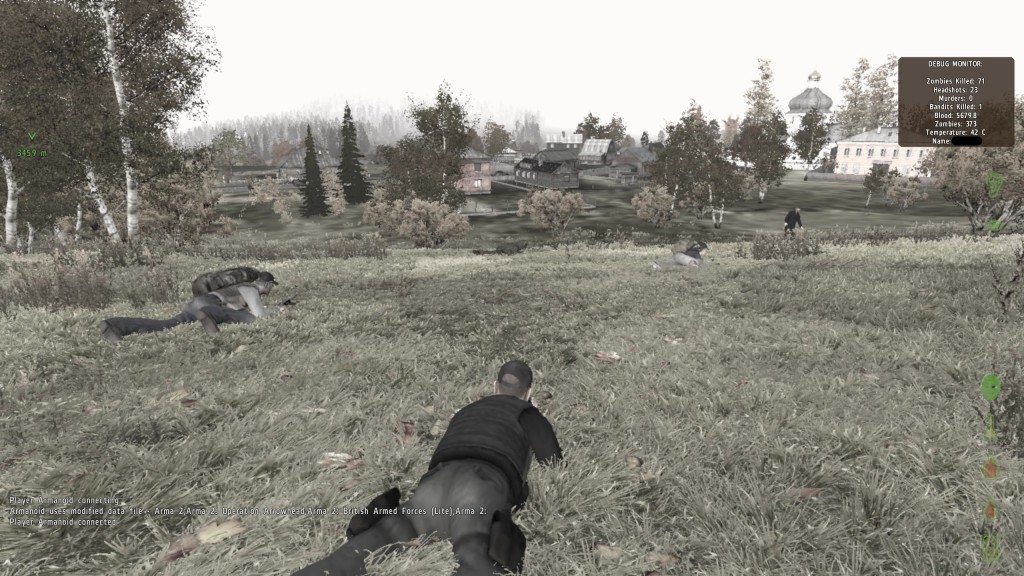
The quintessential DayZ experience: three guys in a field, about to loot through a town, with a single zombie in between them and beans.
Another exam period finished, another game thoroughly played.
For a long time, I’ve always wanted a realistic zombie apocalypse game that was more military simulation than arcade first-person shooter, and in terms of realism, DayZ — the mod for ARMA 2: Combined Operations that’s perhaps the most realistic zombie apocalypse game I’ve ever seen — delivers in spades.
It would be unfair to describe Arma 2 as anything other than a military simulation, as there’s so many aspects to the game itself — radios, ranging, realistic bullet physics, real weather, and so on. DayZ builds upon that, with a few custom weapons and, of course, zombies.
The way it begins is this: you’re dropped into a post-apocalyptic world, filled with zombies. You spawn on the beach, and what you do from that point on is entirely up to you, with the overall goal being to survive as long as you possibly can. Everything is out to get you (zombies, the environment, other players), and you start with basically nothing; I remember the days when you spawned with basic gear — a small pistol, a few bandages, ammo, and enough food and water to get you started. But a few weeks ago, the developer (Rocket) changed the spawning gear to be just a flashlight, a single bandage, and painkillers. Lest you starve or die of dehydration, your first task as a new Survivor should be to find a few rations — perhaps a water bottle that can be refilled from fresh water sources, or a can of lovely mountain dew.
What you do from that point on is up to you.
Do you lone-wolf it and try and find some kind of weapon to defend yourself from the zombies? Do you continually roam around the cities in your never-ending search for supplies? Or do you gear up and see what the wide open world of Chernarus has to offer?
It’s this combination of military simulation, zombie apocalypse, and open sandbox that means DayZ is so compelling to play. There’s so many things to do — if you’re geared up well enough, do you start setting up camp (provided you can find a tent)? Or do you start looking for a better mode of transportation? And if you run into another player, what then? Shoot on sight, or let them live? There’s so many questions that are asked of you during your time playing DayZ, and you’ll have to make all the choices. Will you explore the big bad world beyond the two or three main coastal towns?
Some choices are easier to answer than others: if you’re temperature falls below a certain amount, you better find yourself a heatpack, or stay indoors until you warm up. If you catch a cold, you better hope you can find antibiotics in a hospital, lest you attract zombies with your coughing and spluttering, along with the gradual decrease in your blood level to half what it normally is. If you’re thirsty, you should drink, and so on, and so forth.
Some of your actions even have consequences: if you’re hungry, you should eat. Consuming an easily-found can of beans only replinishes around 200 blood, but if you happen to come across an animal that can be killed, gutted, and the raw meat cooked, you’ll find that replenishes much more blood (800), but requires many more tools. You’ll need to find an animal, for one, then you’ll need a hunting knife to gut it, a hatchet to cut wood for the fire you need to cook the raw meat, matches to make a fireplace, at which point you can finally cook the meat you found on the cow’s dead body. Enjoying your steak raw, sadly, is not an option when you need the blood.
There’s so many ways to accomplish the same thing in DayZ. You can, for example, light a fire to warm up, instead of going indoors or finding a heatpack. There are many ways to replenish your blood, too: you can eat (beans or cooked meat), or you can get a blood transfusion, with the latter option requiring another player and a blood pack — an item only found in one of the four hospitals in Chernarus.
It wouldn’t be a military sim without weapons, and DayZ is the perfect blend, weapons-wise, between realistic and military. Common weapons you can find include crossbows, double-barrelled shotguns, winchesters, Lee Enfield rifles, and a whole assortment of sidearms, from the humble Makarov (the previous starting sidearm), to the trusty M1911, revolver, M9, and many more. It isn’t until you start looking for higher-tier weapons that the real fun begins: you can find scoped hunting rifles like the CZ500, and then you get into the true military weapons: M16 and M4 variants, AK and variants, light machine guns like the M249, silenced sub-machine guns, and even massively overpowered sniper rifles like the M24, DMR, and 50-cal M107. All guns make a distinctive sound when fired, so you can tell whether a player is firing an M1911, or whether you should be running for your life any second now because he’s got the gun with the biggest range in the game.
In true DayZ fashion, the zombies are affected by pretty much everything. If you run, you’ll attract zombies. If you crouch-run, you’ll attract zombies. If you crawl, you might attract zombies. If you fire a gun that makes a sound, you can expect all the zombies within a 50-meter radius to hear it, and if you’re firing a weapon in town, you better hope that there aren’t any curious players who come to investigate. That’s kind of the beauty of DayZ: there’s always another way. If you want to kill a zombie that’s between you and an objective, you can — either use a silenced gun, or even melee using the hatchet or crowbar. Flares attract zombies. Smoke grenades attract zombies.
And the zombies in DayZ? The zombies in DayZ hurt. If you’ve got aggro, they come at you at a frantic pace, hurt when they hit you, and can cause you to start bleeding out, or even break your bones. Thankfully, you can outrun zombies if you’re standing up and running — you can lose the zombies if you break line-of-sight and they don’t see (or hear) you again, but you can usually expect your running to attract even more zombies, especially if you’re running through a town. The line-of-sight thing is pretty interesting, and makes zombies fairly easy to evade if you’re running through a town — harder to lose if you’re out in an open field, but still possible. The line-of-sight is an interesting game mechanic anyway, and means even that newer players have a chance to survive (or they’ll learn stealth, which will help them out in the long run).
Health in DayZ matters. You have a blood meter, and if you’ve been in battle and taken a hit, sometimes you’ll start shaking from the pain, making accurate gunfire impossible. Thankfully, you can take painkillers to numb the pain. If a zombie breaks your bones, or if someone opens a door on you and you break a bone (it’s still an alpha, remember), you can fix yourself up with morphine. If you start bleeding out, you can bandage yourself up.
Yes, there’s quite a lot to DayZ — and we haven’t even discussed looting, vehicles, other players, playing in a group, or even death. But the reason DayZ works so damned well — even in its current alpha state — is that it’s just fun to play.
Diablo III isn’t quite the opposite in that it’s still fun to play, but it’s just not as compelling when compared to DayZ or even its predecessor, Diablo II. Diablo II was much, much darker than its successor, and Diablo III just feels as though it’s been given an overhaul for the worse. I know they’re essentially the same game, but it doesn’t feel as foreboding. It tries to be, what with the grotesque models and overall evil themes, but it just falls short of the level set by Diablo 2, and I’m not entirely sure why.
Don’t get me wrong, for the most part the graphical upgrades are more than welcomed (gaming at 800×600 isn’t my idea of fun these days), but instead of using those fancy new animations and graphics to make a better, gritter game, all Blizzard have done is put a few new colours in here and there, made gameplay simpler along the way, instead of making it darker, like a true sequel to Diablo II should be. I enjoyed Diablo II because it was exactly the kind of game I wanted to play — a dark and gritty game, filled with unknown terrors and semi-RPG elements.
Now, Diablo III feels like it just doesn’t have that special spark, and all because they’ve added a few new colours into the palette. The core gameplay hasn’t been changed all that much — Diablo III is still a dungeon crawler at heart — but it has been made to seem more attractive to newer players. The typeface is different, more inviting, which contributes a lot to the overall look and feel of the game. It’s a beautiful game, but there’s no compelling reason to play it besides the continuation of the storyline, and I’m honestly not sure if I would have played it at all if I wasn’t such a huge fan of the second Diablo game. For those that actually want a “nicer” dungeon-crawling game with a more upbeat tempo, there’s always Torchlight. Diablo was supposed to be the go-to game for dark and gritty, and the third one in the series just doesn’t deliver.
Which is a real shame.
DayZ is different in every way. Because it’s based on a military sim, it’s so much more different than your typical zombie apocalypse shooter. There’s not much actual gameplay, to be sure, but that’s half the fun: when you’re given no strict instructions and no real goal apart from just survival, you make do with what you have. At first, you’ll loot cities for all the beans you can get your hands on. You find a weapon to defend youself with. You kill any zombies that cross your path. You make your own decisions when it comes to killing other players, or letting them live. You team up with other players with the goal of survival, and maybe you’ll abandon them to save yourself from the horde of zombies, maybe you won’t.
But that’s just where the fun begins.

